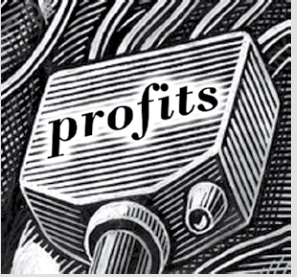Even life and death matters can’t override the profit dynamic
Around 2007 federal officials decided to ensure that the US medical stockpile would have the ventilators needed in a predictable epidemic. They wrote specifications for an easy-to-use device that would cost $3000 each. In 2008, Newport, an independent company in California won the contract, expecting to sell 40,000 ventilators to the government and more on the commercial market, where the standard ventilator then cost about $10,000.
Things went smoothly with officials from the Department of Health and Human Services (HHS) monitoring progress. Newport shipped 3 working prototypes in 2011. The plan was to apply for clearance from the FDA to sell the device in 2012.
3 working prototypes in 2011. The plan was to apply for clearance from the FDA to sell the device in 2012.
That didn’t happen. In May of 2012, Newport was bought by Covidien, a multibillion-dollar device company. Covidien shelved the project (“unprofitable”) and was released from the contract in 2014.
In 2015, HHS tried again, this time contracting with the subsidiary of a multibillion-dollar Dutch company, Phillips. A $3280 ventilator was approved for market in July 2019 and HHS ordered 10,000.
None of those have been delivered. Instead, Phillips began selling a commercial version of the ventilator developed with federal funds, for about $17.000 per unit.
And in April, the Trump Administration signed a new contract with Phillips to buy 2,500 of the ventilators at $15,000 each. They also signed a contract with General Motors to buy 30,000 ventilators for $16,000 each—to replenish the national stockpile, probably in August.
This story was uncovered by ProPublica and appears in detail at www.propublica.org.
It’s not “profit,” it’s “executive compensation”
St Peter’s in Olympia is a not-for-profit hospital managed by the Sisters of Providence until 1979. As the community grew smaller, the nuns found outside management but kept the hospital’s commitment to service.
That changed in 2012, when Dr. Rod Hochman moved over from Swedish Hospital to head the Providence System.
Hochman oversaw the affiliation of Swedish (which was having financial difficulties) with Providence and then arranged a merger with California-based St. Joseph’s Hospitals.
With that Hochman embarked on a cost-cutting campaign that included layoffs—but Hochman and 14 other top executives in the Providence System gave themselves raises: Hochman’s compensation jumped from $4.1 million in 2016 to $10.5 million in 2017. Total compensation for 14 executives increased by $14 million, or 59 percent.
Like other businessmen, Providence’s leaders have their venture capital fund, their investment portfolio, and their place on blue-ribbon commissions telling us that labor costs are a problem and we are to blame for out-of-control health.

Be First to Comment